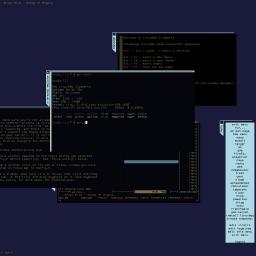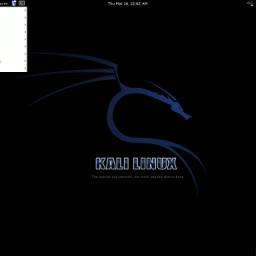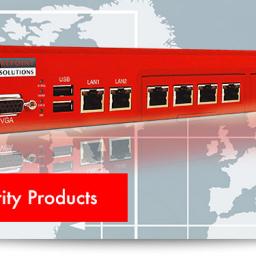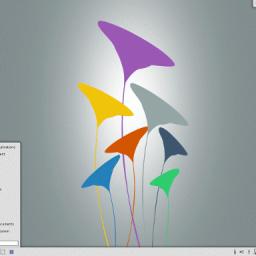
Some say, "Linux should reduce complexity by standardizing on a specific subset of tools, packages, and desktop environments." To that, the guys at
LinuxBBQ respond, "Sorry, can't hear you, too busy having fun!"
LinuxBBQ is a riot of diversity, but not complexity, and guarantees you can have not just the workspace you want but that it will be your very own.
Check out their website, "Get Roasted!", where they boast an environment of 100 different specific editions (micro-editions, really, in my opinion) and an unprecedented choice of 70 different window managers. The haters might say, "Too many!" I say, "Sounds like fun." Turns out, at the base, LinuxBBQ isn't that complicated: it used to be based on Debian Sid, but now starts with Ubuntu 13.10, and has integrated some scripts, kernels, and tools from the guys at GRML, Siduction, and Linux Mint.
Then they add in the window managers. Offhand, I can only name about 13, so these guys have dug deep: everything from KDE to Razor-QT, WMii, Monsterwm, Herbstluftwm, xmonad, nullwm, oroborus, tmux, spectrwm, and another 30 beyond what's on their wiki page.
Then they break it up into editions. Here's where you can tell these guys are just hackers having fun, and they're well removed from the starchiness of some of the big, 'classic' distros, who have to look over their shoulders at their lawyers and worry about being politically correct. Check out just a sample of what they produce:
- RMS: (No X, compiled for 486 with a full emacs
- Psychedelic shitstorm: based on windowlab
- gangbang: 53 window managers on a live CD
- neckbeard: ratpoison and emacs
- cameltoe: based on the jwm window manager
There's more, and yes you could probably get most of these packages on another distro with some effort, but you know when you can download the "clit", "noob-killah", or "pringles" editions, you are fully in the realm of hackers having fun. So, where to begin? Start with
Cream, their June 2014 release, including netsurf and firefox as browsers, mc, ranger, and pcmanfm as file managers, and cmus for listening to music. Or as they say, "
Follow that crap on G+" where you can see a screenshot or two. Finally, here's their own introduction to the distro, and I think it reveals their philosophy very well:
Why is LinuxBBQ not recommended for me?
We do not say that LinuxBBQ is the best distro under the sun - quite the opposite. It will most probably not fit the average users needs. There are many, many reasons not to come to BBQ-Land.
1) LinuxBBQ is more or less default Debian Unstable
2) You will probably not have "plug-and-play" out of the box, for example your printer needs to be set up via CUPS (and CUPS is also not pre-installed) - in our opinion not everybody needs to have all services and daemons ticking in the background. If you need additional services, you will have to set them up by yourself. Of course the BBQ staff is happy to help you. But think twice if you want to get your hands *greasy*.
3) You have to edit configuration files to make things look like you want them and you will
need to spend countless hours customizing the look & feel. Believe us, you will probably want to go back to the "fast-food" distros, and enjoy the defaults there.
4) The BBQ philosophy is: provide the meat, let the user season. So, you will have to download your favourite applications. They are partly coming from experimental sources and carry much
higher version numbers than what you find in Debian Stable. If you don't want to run the newest GIMP, Inkscape, Iceweasel browser or WINE, look somewhere else.
Curious? Visit LinuxBBQ here.
 Munich city council's decision to move from Windows to Linux may be under scrutiny, but it's worth remembering it's not the only major organisation to have chosen open source for its desktops. Linux-based desktop operating systems face barriers to widespread adoption and skepticism about their future prospects due to their limited use today. Yet major users do exist, including companies such as Google and a small but growing number of government bodies. TechRepublic covers five of the major players that have invested seriously in Linux desktops.
Munich city council's decision to move from Windows to Linux may be under scrutiny, but it's worth remembering it's not the only major organisation to have chosen open source for its desktops. Linux-based desktop operating systems face barriers to widespread adoption and skepticism about their future prospects due to their limited use today. Yet major users do exist, including companies such as Google and a small but growing number of government bodies. TechRepublic covers five of the major players that have invested seriously in Linux desktops.






